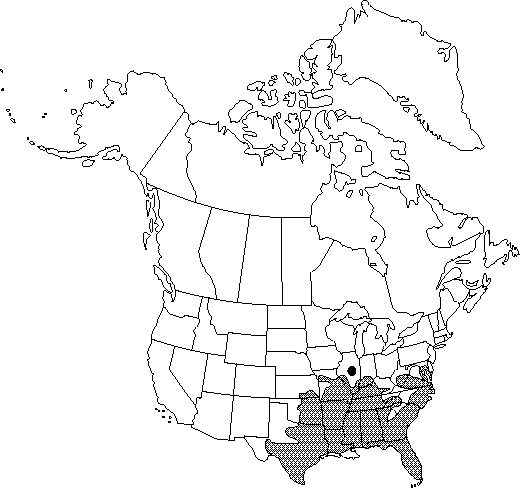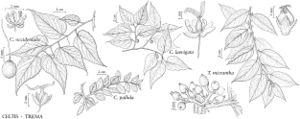Celtis laevigata
Enum. Pl. suppl: 67. 1814.
Trees, to 30 m; trunks to 1 m diam., crowns broad, spreading. Bark light gray, smooth or covered with corky warts. Branches without thorns, often pendulous, young branches pubescent at first, then glabrous. Leaves: petiole 6-10 mm. Leaf-blade typically elliptic-lanceolate to ovatelanceolate, (4-) 6-8 (-15) × (2-) 3-4 cm, thin and membranaceous to leathery, base broadly cuneate to rounded, margins entire or rarely with a few long teeth, apex sharply acute to acuminate; surfaces glabrous or nearly so, margins ciliate. Inflorescences: flowers solitary or few-flowered clusters at base of leaves. Drupes orange to brown or red when ripe, nearly orbicular, 5-8 mm diam., beakless; pedicel 6-15 mm. Stones 4.5-7 × 5-6 mm. 2n = 20, 30, and 40.
Phenology: Flowering late spring–early fall (May–Oct).
Habitat: In rich bottomlands along streams, in flood plains, and on rocky slopes
Elevation: 0-300 m
Distribution

Ala., Ark., Fla., Ga., Ill., Ind., Kans., Ky., La., Md., Miss., Mo., N.C., Okla., S.C., Tenn., Tex., Va., W.Va., n Mexico
Discussion
The Houma used preparations from the bark of Celtis laevigata to treat sore throats and venereal disease (D. E. Moerman 1986).
Selected References
None.
